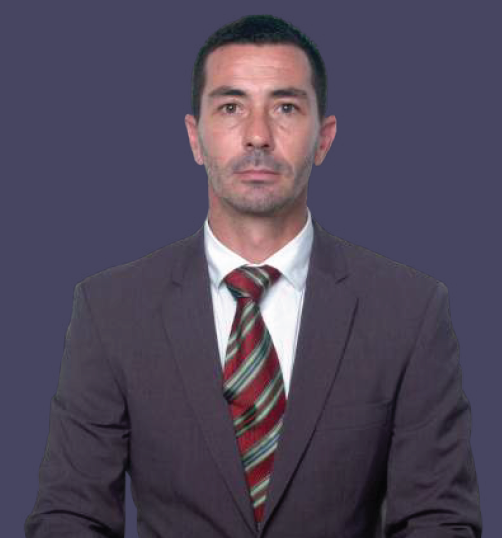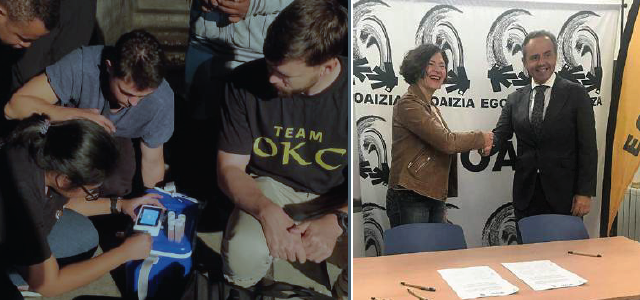Industry Profile: ANTONIO BUSTAMANTE

ANTONIO BUSTAMANTE
Later, once tuna has been sold and is sent to a processing facility (either a cannery or a fresh tuna processor), the BIOFISH 3000 HIS desktop device can be used to easily assess histamine and comply with regulatory requirements for both export and domestic markets.
And last but not least, imagine that all parties involved can access a place on the web to share and trace information effortlessly, just with a smartphone – sounds good, right? Well this is already a reality: BIOLANglobal platform registers and processes all this information which helps users to make faster and better decisions.

A: Having two differentiated models, the desktop version and the portable version, each designed to meet specific requirements, allow us to address the needs of actors throughout the entire value chain. From the poleand- line fishing by traditional communities to the biggest corporations’ purse-seiner fleets; from shrimp farmers in remote mangrove areas to super-intensive production pond farms where production cycles are increasingly shortened; and from local-scale canneries to global brand companies – all these can use our devices.
Q: What type of equipment would be useful to determine quality; for example, if a buyer is interested in obtaining sashimi grade tuna, what would you suggest?
A: Two different solutions have been put in market for this purpose: one is the quantification of histamine in tuna, where results below 5 to 10 mg/ kg (ppm) might be expected; the other one is an objective determination of Yake degree (burnt meat syndrome), this being the first alternative to current visual and optical practices.
Q: Does BIOLAN produce simple hand-held tools that can be used in the smallscale fishing sector to assess the quality of fish and fishery products? Do these tools need satellite connection or other types of technology which may not be available to the sector?
A: The price and ease of use of hand-held devices make these tools accessible for small-scale fishers and farmers. The portable BIOFISH 7000 portable model does not require GPS nor data connection to be operated since it can assess and store up to 500 analyses results in its internal memory. However, results can be uploaded to the BIOLANglobal platform with a mobile application if needed.
Q: We understand that BIOLAN collaborates and partners with research centres in its drive to develop tools. Taking the example of the recentlysigned agreement with the Electrochemistry and Optical Spectroscopy Center of Excellence (EOSCE) at Chulalongkorn University, Thailand, what are the desired outcomes of the collaboration, and how will the collaboration benefit the fisheries and aquaculture industries?
A: The passion for innovation and building a collaborative ecosystem with educational partners, technology suppliers and clients has always been a pillar of BIOLAN’s Corporate Social Responsibility. We believe in social cohesion and we design our business strategy aligned with the Sustainable Development Goals (SDGs), mainly impacting on educational and environmental goals. Collaborating with Chulalongkorn University will allow both parties learn from each other and find synergies that will reduce research costs and be more efficient with regard to the development of new tools.
Q: With regard to social responsibility to people and the environment, what are some of the leading initiatives that BIOLAN is spearheading?
A: The most important initiative is that all BIOLAN methodologies do not use any hazardous reagent that can be harmful to the environment and the users, such as hydrochloric acid (HCl), silver nitrate (AgNO3) and sulfuric acid (H2SO4). We only use distilled water for sample preparation and during the analysis process which makes our technology one of the cleanest and safest. Our firm commitment to environmentally-related SDGs has also facilitated our participation in various projects nationally and internationally under the Horizon Europe research and innovation programme for 2021-2027. The European Climate, Infrastructure and Environment Executive Agency (CINEA) is one of the implementers of this programme. Check our project status in the CINEA website: https://cinea. ec.europa.eu/programmes/horizon-europe_en.
But we have many others in progress: one is related to waste reduction of plastics and electronic components, an initiative that is not limited just to recycling parts and having a deeper understanding of product lifecycle. Another one is a scholarship programme in collaboration with an NGO called Egoaizia that we launched in 2021 that has already funded the access to higher education for six women at risk of social exclusion in Peru. Both the workers and the Board of BIOLAN contribute with economic resources to help these women access greater opportunities.
Q: And on a final note, what are some innovative developments that BIOLAN plans to introduce to the market in the next several years?
A: As in the past, we will continue to work closely with clients and academia in developing our portfolio of solutions. A good example of this is our project with fishmeal companies, with whom we are currently working on nitrogen compounds and other ions. We have also found that there is a growing demand for solutions to assess heavy metals. In the following years, BIOLAN is likely to pursue developments in the field of food safety and quality sensors. We also have other IT and AI projects that will come into fruition in the near future.































